Whether you fish every weekend or just occasionally, you know that not all fishing piers are created equal. Sometimes visiting an observation or fishing pier can less than ideal with unstable pile supports (see picture below) or cracking boards providing sharp wood slivers. The pier may also have a slippery surface after it rains or a hot and unforgiving railing to sit or lean against.
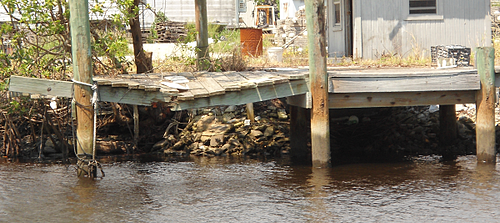
The three most common materials owners use for fishing pier construction are timber, composite and concrete. Which material is best suited for use on a fishing pier?
Let’s look at a few considerations that designers should keep in mind before specifying a product.
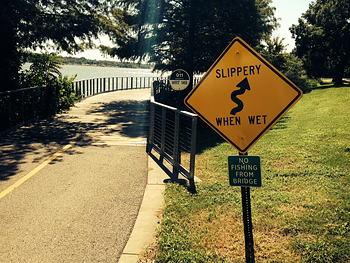
Boardwalk Materials: Factors to Consider for a Fishing Pier
This article will discuss two primary factors landscape architects and engineers consider when designing a commercial fishing pier:
- Slip-Resistance
- Durability
Slip and fall accidents must be minimized in order to limit the owner’s liability. Relative to boardwalks and fishing piers, slip and fall accidents are often the biggest concerns that city, county and state agencies grapple with. Entire seminars and meetings are held to discuss slip and fall, including Americans with Disabilities Act (ADA) compliance.
Check out the Greenbelt Lake fishing pier and how they addressed ADA compliance with their project:
An added challenge specific to fishing piers is that water is guaranteed to be present on the surface, unlike some marine boardwalks that are meant only for transportation.
Fishing is not a dry activity-- bait buckets, coolers of ice and water, and fresh catches are bound to douse the surface of the boardwalk with water.
1. Slip Resistance
No matter the boardwalk material – timber, composite or concrete – the walking surface is more slippery when wet. The real question then becomes, to what degree? How bad does it get, and what can we do to prevent the boardwalk surface from becoming an ice skating rink?
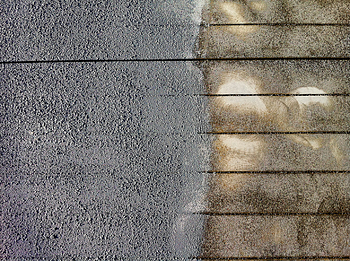
Timber
The chemicals used to pressure treat Southern Yellow Pine deck boards (ACQ) eventually leach out of the wood and onto the surface. When mixed with water, this can become very slick. Also, a wood fishing pier’s walking surface wears down quickly, creating a smooth, worn finish. This is especially problematic when the surface becomes wet, offering little slip resistance.
The slip resistance of deck boards can be greatly enhanced with adhesive, non-slip strips or an additional sealant “paint” product applied to the walking surface. However, both of these need to be reapplied every year or two, as they inevitably wear off or peel up, creating another potential trip hazard.
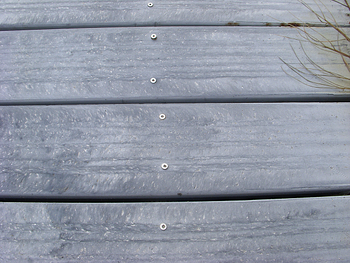
Composite Decking
Composite decking in the boardwalk industry is regarded as offering the least slip resistance of the three most common boardwalk materials. Most composite decking products are highly oil-based. Oil resins mixed with water results in a very slippery fishing pier surface. The composite decking can become even more slippery when nearby sand is tracked onto the fishing pier. The picture shown below shows a composite deck board under heavy commercial use in Florida. In just under 5 years, running your hand across the board feels like a piece of ceramic tile. Read more about this decking comparison at Jupiter Inlet here.
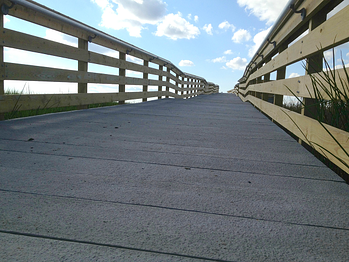
Precast Concrete
Concrete boardwalks make use of form liners set in the bottom of the steel forms used to produce the individual boardwalk components. As the concrete is poured and cured on top of the form liner, and then turned over, the result is a walking surface with a durable, slip-resistant finish.These textures reduce boardwalk slipperiness without increasing maintenance costs year over year. Among PermaTrak’s standard texture options, Sandblast is most commonly used for improving traction on a fishing pier. See a video with close up look at this textured finish here.
Interested in how precast concrete can be used for an elevated pier or boardwalk? Check out this video.
2. Durability
Location is another major factor designers take into account when designing a fishing pier. Coastal fishing piers may face hurricane seasons- so minimizing loss of product and cost of replacement for these piers is obviously important to consider when specifying the boardwalk materials. While no boardwalk company or boardwalk material supplier can design or build their structures guaranteed to withstand all forms of Mother Nature, as a designer, you can specify materials that will be more durable in the face of a tropical storm or hurricane.

In a damage assessment after Hurricane Katrina, the damage to timber vs. concrete piers at the Long Beach Marina was observed. Apart from having utility tray covers blown or washed away, the concrete piers were largely undamaged. The timber piers, in comparison, had significant structural damage in the form of lost decking and stringers. All along the coast, many public access and fishing piers that were constructed from timber lost their deck boards and supporting stringers, even if the piers were fairly recently installed.
While the majority of the timber piles remained in place through the storm, many were noticeably distressed or distorted from decking and fasteners being ripped out. Catastrophic events like Hurricane Katrina very clearly display just how important it is to keep natural disasters in mind when designing coastal fishing piers.
Location and consideration of how slippery the boardwalk surface will be are two of the biggest considerations for any boardwalk, pier or pedestrian bridge structure that traverses over water. Keeping these pointers in mind will help you determine which material is best suited for your next fishing pier project.
Examples of Precast Concrete Fishing Piers
PermaTrak has worked on a number of precast concrete fishing piers around North America, including the projects highlighted below. For more, visit our project profiles and photo gallery.
Parkland Village Fishing Pier - Houston, Texas
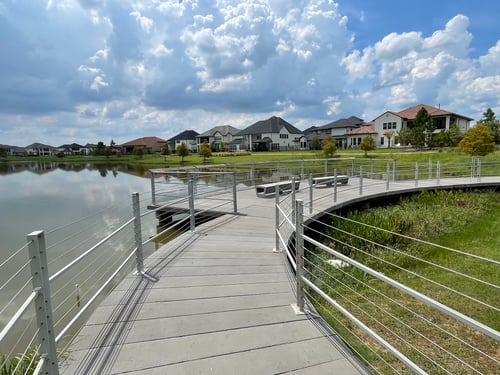
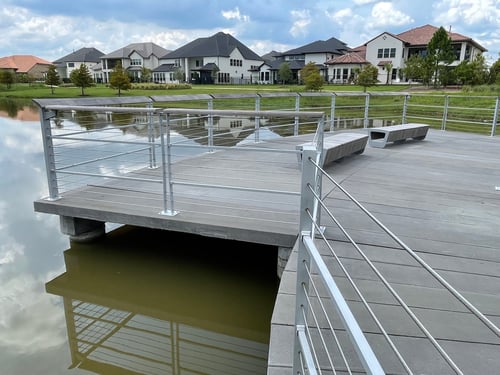
MUD 124 Fishing Pier - Houston, Texas
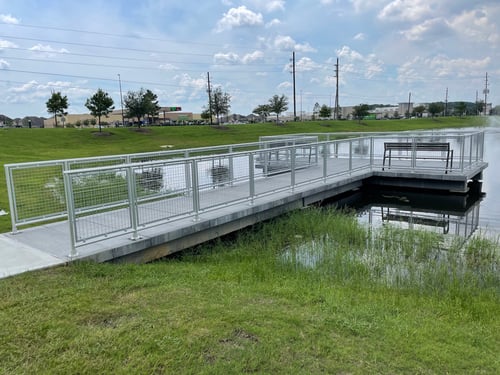
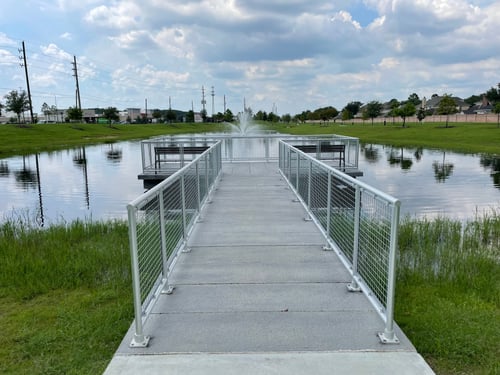
You May Also Be Interested in Reading:




